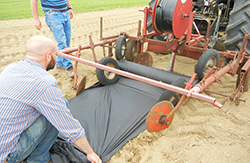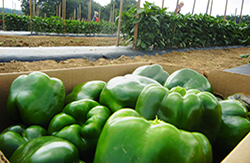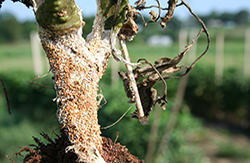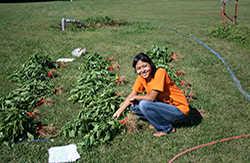

Anaerobic soil disinfestation (ASD), as the name implies, is a process of disinfesting soil by creating anaerobic soil conditions with the incorporation of easily decomposable soil amendments, covering with plastic (polyethylene) mulch, and irrigating to saturation to begin a two to six-week treatment period prior to planting certain high value crops, such as fruits or vegetables. ASD was developed independently in Japan and the Netherlands in the 1990s and 2000s, and more recently
has been researched as a potential fumigation alternative in the United States. ASD has also been referred to as biological soil disinfestation, soil reductive sterilization, reductive soil disinfestation and anaerobically-mediated
biological soil disinfestation.
During ASD treatment, the easily available carbon from the organic soil amendments used in ASD provides a substrate (food source) for rapid growth and respiration of soil microbes. As a consequence, available soil oxygen is reduced as soil is irrigated to fill soil pore space and plastic mulch is used to limit gas exchange between the soil and the ambient atmosphere above the mulch. This creates anaerobic
conditions that persist until the carbon source is utilized or soil moisture content drops (typically one to two weeks). Anaerobic decomposition of the added soil amendment allows many toxic byproducts to accumulate such as organic acids (e.g., acetic and butyric acids) and other volatile compounds that serve to decrease soilborne pests. Preliminary research has also indicated that ASD treatment enhances populations of beneficial biocontrol microbes in soils, which also likely play a role in the effectiveness of treatment.


